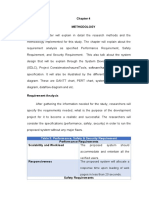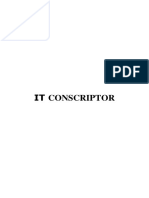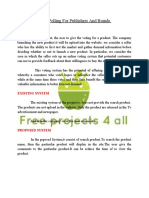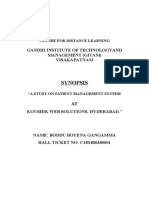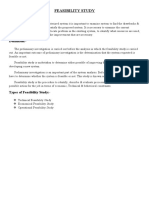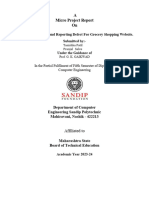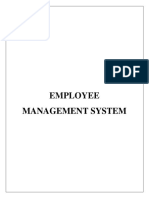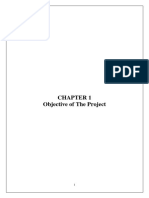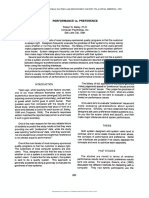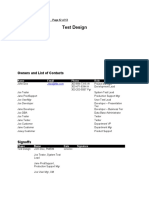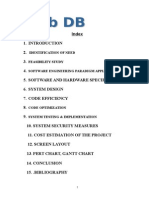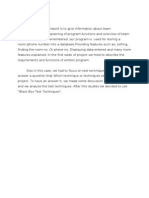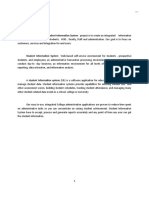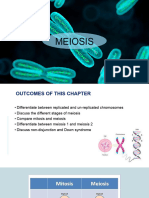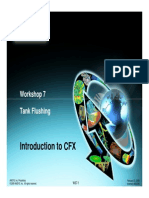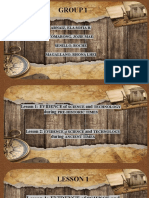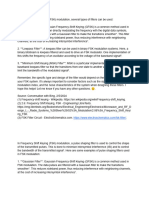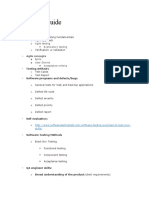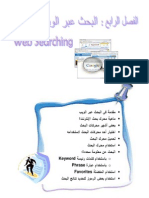Testing Outcomes for the
Prepared by:
Unit: Database Design and Development
Tutor:
10/28/2024
�Table of Contents
Introduction...............................................................................................................................................2
Testing Methodology.................................................................................................................................2
Types of Testing Conducted..................................................................................................................2
Test Cases...............................................................................................................................................3
Findings......................................................................................................................................................3
1. Functional Testing Results................................................................................................................3
2. Performance Testing Results............................................................................................................3
3. Usability Testing Results...................................................................................................................4
Suggestions for Improvements.................................................................................................................4
Conclusion..................................................................................................................................................4
References...................................................................................................................................................4
List of Tables:
Table 1: Test Cases......................................................................................................................................3
Page | 1
�Introduction
This report encompasses the results of testing on Manzaneque Limited IT Helpdesk System
that was designed and implemented. As a primary goal of the testing phase is the assessment
of the system, with reference to the indicated functional, performance and usability
requirements. The subsequent sections will provide information concerning the testing
approach, results, and recommendations incorporated from the testing outcomes.
Testing Methodology
Types of Testing Conducted
1. Functional Testing: Ensuring that every aspect of the system work as required when
triggered.
2. Performance Testing: Measuring system performance and stability when facing
different types of loads.
3. Usability Testing: The main criteria that have to be assessed regarding the provided
interfaces are its navigability and the UI overall quality.
Test Cases
With the aim of evaluating the behavior and various characteristics of the IT Helpdesk
system, many test cases were designed. Normal and hetero data points were used in
developing the test cases to consider all possible system stability considerations.
Test Case Description Expected Results Actual Status
ID Results
Valid caller ID, Call is logged
TC-01 Log a new call problem type successfully Successful
Problem type
assigned
TC-02 Assign problem type Valid problem type correctly Successful
Resolution
Valid resolution logged
TC-03 Resolve a problem details correctly Successful
Report
Generate generated
TC-04 performance report Date range for calls successfully Successful
Log a new call with Error message Error
TC-05 invalid data Invalid caller ID displayed message
Page | 2
� System
handles input
Log a new call with without
TC-06 extreme data Very long caller name crashing Successful
System
responds
Performance under Simulate 100 within 2 1.5
TC-07 load simultaneous calls seconds seconds
User attempts to log a User navigates
TC-08 Usability navigation call successfully Successful
Table 1: Test Cases
Findings
1. Functional Testing Results
Call Logging: It was also able to record calls and generate report with all necessary
information recorded. According to the operators, they can easily input the data, and hence,
they are relieved of a lot of work and time used in logging.
Problem Resolution: The details of any resolution made were well recorded and the system
was able to search through the records without much difficulty. Close up follow-ups were
easily managed in the system without much down time being experienced.
2. Performance Testing Results
Load Handling: In performance testing the system response was able to handle one hundred
calls in parallel and its response time was in the acceptable range of 1.5 seconds.
Stress Testing: Out of the scalability factors, the stability of the system under stress
conditions was evident meaning that the system was designed for future growth.
3. Usability Testing Results
User Experience: End user feedback analysis through usability testing showed that operators
had no problem relating with the interface. For instance, some respondents recommended
that there could be even further reductions of the number of menus in order to make the page
even more easy to navigate.
Error Handling: People liked the use of message prompts when an incorrect command was
entered because it helps individuals identify a problem and fix it nearly immediately.
Page | 3
�Suggestions for Improvements
Based on the testing outcomes, the following improvements are recommended:
1. Enhanced User Training: While the system had a positive interface for its users, it
was discovered that get more from new users can be of great help to them.
2. Performance Optimization: It is suggested that testing and tweaking of database
query be done constantly in order to sustain high standards as usage increases.
3. Refinement of the User Interface: Here the idea of reducing the navigation structure
by incorporating user feedback can also be useful for enhancing usability and time
taken to accomplish activities.
Conclusion
The testing phase, indeed, provided evidence that the IT Helpdesk System conforms to the
stated user requirements and runs without functional decline under actual load. Thus, the
authors conclude that, although the system appears to offer substantial value in terms of
feature support, several modifications may be made that would enhance customers’
appreciation of the system together with general system effectiveness. More so, for the
dynamic environment in Manzaneque Limited to be well met, continuous feedback and
frequent system testing would be vital since the system would require change frequently.
References
Page | 4
�Batra, D. &. (1992). Conceptual data modelling in database design: similarities and
differences between expert and novice designers. International journal of man-
machine studies, , 37(1), 83-101.
Captain, F. A. (2013). Six-step Relational Database Design: A Step by Step Approach to
Relational Database Design and Development. Fidel A Captain.
Deng, Y. F. (2004). Testing web database applications. ACM SIGSOFT Software
Engineering Notes, 29(5), 1-10.
Duffy, N. (1999). Database Design for Mere Mortals:A Hands‐On Guide to Relational
Database Design. . New Library World, 100(3), 147-147.
Kaur, T. &. (2015). Designing and development of database testing tool. . International
Journal of Computer Applications., 120(19).
Kraleva, R. K. (2018). Design and Analysis of a Relational Database for Behavioral
Experiments Data Processing. . International Journal of Online Engineering, ,
14(2).
Silberschatz, A. K. (2011). Database system concepts.
Page | 5
